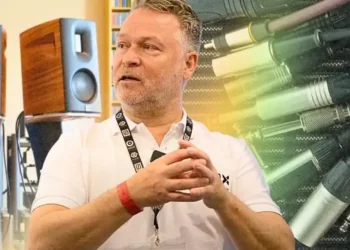Spotify’s Price Hike: More Money, Same Service—Is It Time to Switch?
Spotify users in Europe and Latin America are about to face a familiar yet frustrating sight on their monthly bills: a price increase. But this time, it comes without any noticeable improvements to the service. As the streaming giant hikes its prices again, audiophiles are asking the big question—why pay more for the same old service when there are better-sounding options out there?
The Price Hike: What’s Changing (And What’s Not)
Starting this summer, Spotify is raising its subscription prices across Europe and Latin America, following similar hikes in the Netherlands and Luxembourg.
- In the Netherlands, individual Premium subscriptions will jump 18%, from €10.99 to €12.99. Family plans will rise by 22% to €21.99, and Duo plans will see a 20% increase to €17.99.
- Belgium will see more modest hikes: 9% for individual plans and 17% for family plans.
New users will still get a three-month free trial, but long-time subscribers are getting hit with the higher prices and the same old service. Meanwhile, U.S. users are spared—for now.
No Real Upgrades, Just Higher Prices
What stings the most is that these price hikes come without any tangible improvements to the service. Spotify Premium still offers a max bitrate of 320kbps, which was fine years ago but now feels outdated, especially when competitors like Tidal and Qobuz are offering true high-resolution audio. Apple Music is also ahead of the curve, offering lossless and Dolby Atmos sound for similar or even lower prices.
Spotify has promised a change in the form of a new “Deluxe” tier, expected to launch around $17–$18/month. CEO Daniel Ek has hinted that it will offer HiFi audio, AI-powered playlists, headphone optimization, enhanced library tools, and audiobook hours. But after years of waiting for a HiFi upgrade, users are understandably skeptical—will this new tier be worth the price, or just another distraction?
The Business Side: Why Spotify is Raising Prices
Spotify’s price hikes aren’t just about improving service—they’re about fixing the company’s bottom line.
Music streaming prices have barely kept up with inflation. While Netflix’s U.S. Standard plan now costs $17.99 after years of gradual price increases, Spotify’s U.S. Premium plan has only moved twice in nearly ten years, now sitting at $11.99. And while Netflix earns about $0.207 per hour of content streamed, Spotify pulls in just $0.089 per hour—less than half.
The freemium model, where many users stick to the free tier, is a big part of the issue. Free users generate much less revenue, dragging down Spotify’s earnings and limiting resources for product improvements.
That said, Spotify has made some progress. In 2024, the company posted an operating profit of €1.4 billion, a huge turnaround after a €466 million loss in 2023. This growth has come thanks to tighter cost control, rising subscription revenue, and a 16% increase in annual revenue.
But long-term growth may require more than just price hikes. Spotify could eventually:
- Charge free users a small monthly fee, similar to Netflix’s ad-supported plan.
- Limit free access, nudging users toward paid subscriptions.
- Raise Premium prices again, but only if significant upgrades, like HiFi audio, are included.
- Cap free listening hours each month, boosting revenue but risking alienation of loyal users.
Spotify’s challenge is clear: how to boost earnings without losing the listeners who helped make it a giant.
Should You Stay or Switch?
If you’re paying more and still waiting for that promised upgrade, it might be time to consider your options. Here are some alternatives already offering what Spotify still hasn’t:
- Tidal: Offers lossless FLAC and HiRes FLAC audio, plus Dolby Atmos support, all in one plan with no confusing tiers.
- Qobuz: Provides 24-bit FLAC streaming up to 192 kHz, with a massive library tailored to audiophiles.
- Apple Music: Includes lossless audio and Dolby Atmos spatial sound with no hidden fees or extra steps.
Before you make the switch, consider these key factors:
- Will your gear actually make the difference? (If so, it’s worth it.)
- Do your devices support the audio formats? (Check compatibility with your phone, laptop, car, and smart speakers.)
- Are there any student, family, or annual discounts? (Most platforms offer these.)
- Does the service offer a free trial? (Usually, yes.)
While Spotify still leads in playlist curation and algorithmic discovery—areas where its competitors struggle—it’s falling behind in terms of raw sound quality. If audio quality is your top priority, competitors are currently pulling ahead.
With the Deluxe tier still in development, users are left in limbo. Some will stick it out, hoping for a future upgrade, but many are already packing up their playlists and heading elsewhere.
The choice is yours: pay more for the same, or explore the growing list of services offering superior sound at competitive prices.
This article was rewritten by JournosNews.com based on verified reporting from trusted sources. The content has been independently reviewed, fact-checked, and edited for accuracy, neutrality, tone, and global readability in accordance with Google News and AdSense standards.
All opinions, quotes, or statements from contributors, experts, or sourced organizations do not necessarily reflect the views of JournosNews.com. JournosNews.com maintains full editorial independence from any external funders, sponsors, or organizations.
Stay informed with JournosNews.com — your trusted source for verified global reporting and in-depth analysis. Follow us on Google News, BlueSky, and X for real-time updates.












